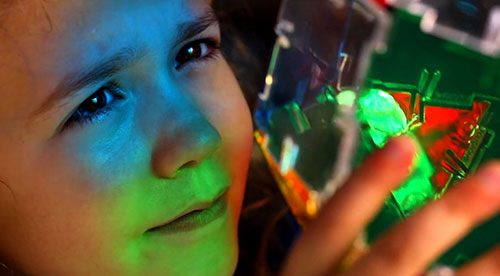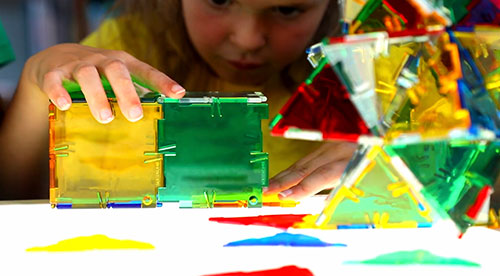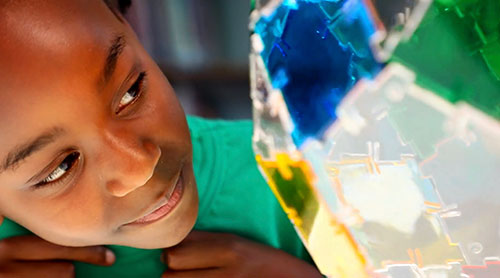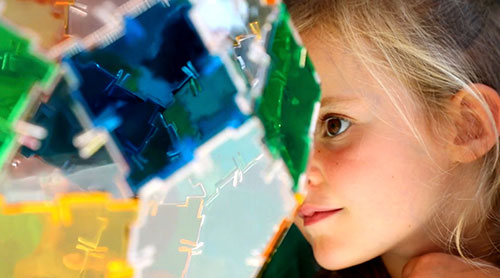The Benefits of Using Lights During Play
Play is one of the best ways for young children to develop essential and important tools and skills which will set them up for the rest of their lives. Today, we would like to talk a little bit about light play and how it could benefit your children during their precious time spent playing.
Play creates powerful learning opportunities across all areas of development. Development and learning are complex and holistic, and yet skills across all development domains can be encouraged through play, including motor, cognitive and social and emotional skills.
UNICEF, Learning Through Play Report
Light play is a form of holistic, educational activity which falls under what practitioners call Sensory Play.
Sensory play is the key to which children unlock their understanding of the world around them, through encouraging them to actively engage with the world around them through their seven key senses: touch, taste, smell, sight, hearing, balance and body awareness.
Research shows that sensory play helps to build nerve connections in the brain’s pathways, which aids children in their ability to complete more complicated and complexing tasks.
Our Crystal Polydron in light play action!
Benefits of light play:
According to the Reggio Emilia approach to Early Years Education, light and shadows are one of the “hundred languages of children” and play a vital role in early childhood development.
This is in part due to the fact that light play follows a child-centred approach to learning, placing the child at the heart of their learning experience. This helps to develop their communicative and social skills by encouraging them to take initiative within their learning and lead their own play.
Lights are also a fantastic source of visual sensory input, with teachers noticing a change in attention span in the children who learn with lights compared to those who don’t. Fascination in this magical world means that children are more likely to engage with activities which include lights compared to those which don’t.
Light play and other sensory activities could also be a really useful tool for children who are sensitive to sensory stimulation. This form of play helps children learn to focus on specific sensory elements in their environment, which in turn helps to filter and block out those which may be causing distress.
This means that children are less likely to follow up on urges to act up as they are actively engaged with the activity and environment that they find themselves in.
To play with lights, the room must be dark - this could already provide a highly distressing environment for young children who may be scared. Light play is great at developing courage as it encourages children to navigate their way through new environments in a fun and exciting way.
An example of this could be helping your child create their very own Zen Den in their dark room with our Giant Polydron Set and Clip-In Coloured Windows. Shine your flashlight from your phone through the windows and watch their den transform into a rainbow palace! Your children will be able to explore the world of lights and the dark from the safety of their very own homemade safe space.
Sensory activities through light play also help to encourage critical and creative thinking across the entire learning process.

Grab a flashlight and get playing with our Giant Polydron Set and Clip-In Coloured Windows
Children may notice the colour purple emerging from a mix of red and blue Crystal Polydron pieces when placed to the light. They may ask the question of why the colour purple and not red or yellow was being created from their Polydron, and begin to draw conclusions as to what could be the reason.
This form of sensory activity invites children to use their scientific methods of observing, forming hypotheses, experimenting and forming conclusions through their exploration of the twinkling world of lights and colours.
Sources:
- The Importance of Sensory Play for Early Years: www.earlyyearsresources.co.uk
- 5 Key Benefits of Sensory Play and Light Up Toys for Your Children: www.loftek.us
- Exploring the Benefits of Sensory Play: www.goodstart.org.au
- Learning From The Reggio Approach: www.childcareeducationexpo.co.uk
- Why Sensory Play is Important for Development: www.educationalplaycare.com
- Learning Through Play: www.unicef.org



